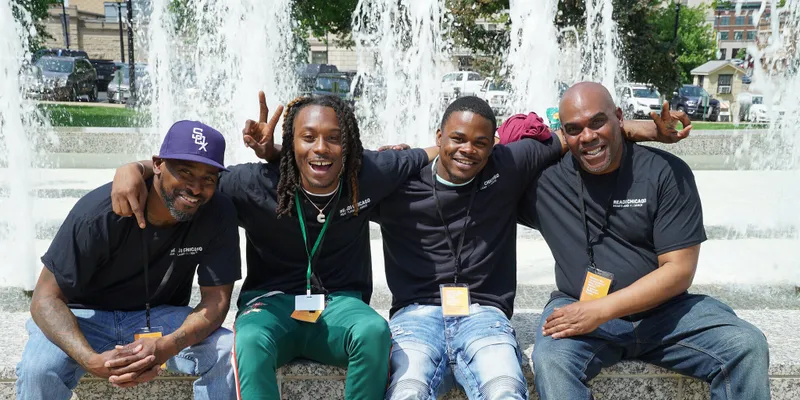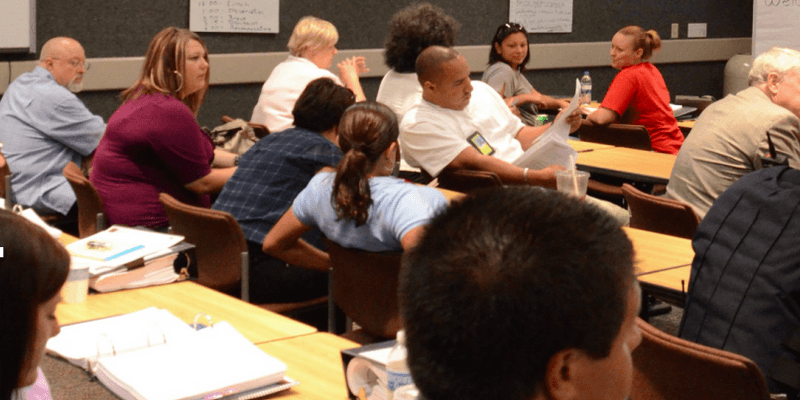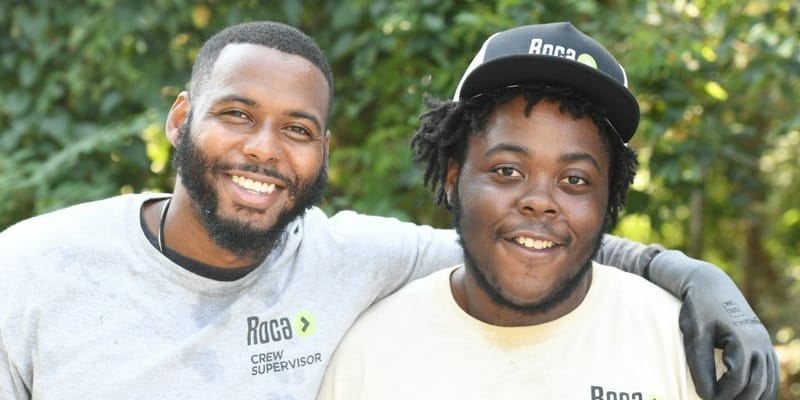Gun violence prevention
Last Revised: October 8, 2025
Strategy overview
- A public health approach to gun violence: Experts recommend taking a public health approach to gun violence, which treats gun violence as a preventable issue of community well-being. This approach involves leveraging local data to define and monitor the problem, identifying risk factors (such as trauma, poverty, and unemployment), strengthening protective factors (such as stable housing and employment), developing and testing prevention strategies, and scaling up effective strategies. It emphasizes prevention, trauma-informed services to promote healing, and data-driven decisions about how to deploy resources where they will have the most impact.
- Cross-sector partnership and governance: Multi-sector collaboration is preferable for implementing a public health approach to gun violence. Local governments should establish and lead cross-sector coalitions to prevent and reduce firearm violence. Collaborating across sectors can help local leaders understand and address causes of firearm violence, effectively reach highest-risk individuals, and promote investment and sustainability over time. Partners often include local health and human services, labor, housing, and/or victim services agencies; law enforcement; and community-based organizations. A formal management and governance structure, such as an Office of Violence Prevention or Office of Neighborhood Safety, can institutionalize collaboration and formalize roles and responsibilities.
- Data-driven violence review protocols: Councils or commissions that team up to review data and evidence, often called violence reduction councils or homicide review commissions, bring together partners across sectors to routinely review firearm incident data (“case reviews”), share information, and make data-driven decisions about how to strengthen interventions. Case reviews focus on understanding the circumstances of firearm incidents, including victim and offender motives and demographic characteristics. Councils or commissions can then assess trends in incident time, location, weapon use, group involvement, and connections between related conflicts. All of this information should be used to inform policy and practice, for example, by guiding decisions about where to deploy resources and which groups or individuals to engage.
- Carefully targeted incentives and deterrents for high-risk groups: Gun violence is often a concentrated problem perpetrated by a small subset of the population. Research has demonstrated the effectiveness of strategies that focus on high-risk individuals, groups, and geographic locations. Law enforcement can work with community leaders to identify groups of individuals who are at high risk for engaging in violence, then work with those individuals to proactively deter crime and connect them to services. Research shows that focused deterrence has been effective in reducing overall crime without necessarily increasing arrests or displacing crime to other places.
- Community-led de-escalation and mediation: Community-led initiatives can reduce crime through relationships between community members and those at highest risk for violence, and they are a key component of broader violence reduction strategies. These initiatives often involve outreach and mediation to interrupt violence and de-escalate conflicts. Community-led initiatives can build buy-in among the community for violence reduction efforts, especially in places where there is historical mistrust of government and/or law enforcement.
- Smart gun laws and secure storage: Despite state preemption laws that often constrain local action on evidence-based policies like regulating ghost guns, strengthening background checks and licensing laws, and closing loopholes, mayors or police chiefs can work with their state’s attorney general to ensure all state and municipal firearms laws are being properly enforced and that officers have the requisite training to enforce these laws. Local leaders should also promote secure firearm storage practices in homes and motor vehicles (sometimes called child access prevention). Secure storage reduces firearm suicides and unintentional youth injuries and homicides, while also reducing the likelihood of gun theft. Researchers estimate that nearly 400,000 guns are stolen each year, with about a quarter of those thefts from motor vehicles.
- Built environment enhancements to reduce violence: Improvements to the built environment, sometimes referred to as Crime Prevention through Environmental Design (CPTED), can be an effective part of a broader approach to gun violence prevention. Research has demonstrated that enhancements like improved street lighting and vacant lot cleanup can reduce violence and positively impact perceptions of public safety.
- A 2024 mixed methods study found that cities with six key capacities — political governance, data-informed problem analysis, cross-sector collaboration on a shared strategy, effective operational management, effective violence reduction infrastructure, and sustainability and institutionalization — more successfully reduced violence over time.
- A 2024 systematic review and 2016 research synthesis found that child firearm access prevention laws can reduce firearm suicide and both unintentional injuries and deaths among youth.
A 2019 systematic review found that focused deterrence has a statistically significant effect on reducing violent crime. An updated systematic review is forthcoming, which will include 27 additional studies, including eight randomized control trials.
A 2018 systematic review found that remediating abandoned housing and greening vacant lots can reduce violent crime.
A 2012 impact evaluation found that districts served by the Milwaukee Homicide Review Commission experienced a 52 percent decrease in homicides, compared to 9.2 percent in control districts. This model lays the foundation for violence reduction council structure recommended in this strategy guide.
Before making investments in this strategy, city and county leaders should ensure this strategy addresses local needs.
The Urban Institute and Mathematica have developed indicator frameworks to help local leaders assess conditions related to upward mobility, identify barriers, and guide investments to address these challenges. These indicator frameworks can serve as a starting point for self-assessment, not as a comprehensive evaluation, and should be complemented by other forms of local knowledge.
The Urban Institute's Upward Mobility Framework identifies a set of key local conditions that shape communities’ ability to advance upward mobility and racial equity. Local leaders can use the Upward Mobility Framework to better understand the factors that improve upward mobility and prioritize areas of focus. Data reports for cities and counties can be created here.
Several indicators in the Upward Mobility Framework may be improved with investments in gun violence prevention. To measure these indicators and determine if investments in these interventions could help, examine the following:
Safety from crime: Reported property crimes per 100,000 people and reported violent crimes per 100,000 people. These data are available from the Federal Bureau of Investigations’ Uniform Crime Reporting Program.
Safety from trauma: Number of deaths due to injury per 100,000 people. These data are available from the National Center for Health Statistics’ Mortality File and the CDC’s WONDER database.
Just policing: Number of juveniles arrested per 100,000. High rates of juvenile arrests provide a strong indicator of overall system involvement and over-policing. These data are available from the Federal Bureau of Investigation’s Crime Data Explorer.
Mathematica's Education-to-Workforce (E-W) Indicator Framework helps local leaders identify the data that matter most in helping students and young adults succeed. Local leaders can use the E-W framework to better understand education and workforce conditions in their communities and to identify strategies that can improve outcomes in these areas.
Several indicators in the E-W Framework may be improved with investments in this strategy. To measure these indicators and determine if investments in this strategy could help, examine the following:
Exposure to neighborhood crime: Rate of violent felonies and property felonies by city or county (number of incidents per 100,000 residents).
Neighborhood juvenile arrests: Rate of juvenile arrests by city or county (number of arrests per 100,000 residents).
Access to health, mental health, and social supports: Percentage of programs offering health, mental health, and social services, or staff or consultants providing infant and early childhood mental health consultation (IECMHC) services.
-
Mental and emotional well-being: Percentage of youth with mental or emotional health needs as identified by a universal screening tool.
Clear roles and responsibilities: Mapping partners’ responsibilities and how they support the overall vision can help align efforts within an overarching strategy. This can minimize duplication of efforts and ensure that each partner is playing a unique, but complementary, role. One way to do this can be through a logic model or theory of change. A theory of change should clearly describe who is responsible for each activity, how they work together toward a shared vision, and what resources are required.
Regular cross-sector review meetings: Violence reduction councils or commissions should routinely conduct case reviews of homicide and assault data along with contextual information, then examine opportunities to improve system-level policies or practices and address risk factors for violence. Experts recommend including six types of partners in these councils, at minimum: public health officials, police, prosecutors, corrections officials, community services providers, and representatives from the mayor’s office. Additional partners may be engaged depending on local context. Violence reduction councils can be housed within an Office of Violence Prevention or Office of Neighborhood Safety, or in jurisdictions without a central governance structure, they can be sponsored by another city agency such as the public health department. These meetings will likely be less effective if they are only diagnostic – the purpose of the meetings should be to spur strategic government activities.
Identify highest-risk groups and individuals: Disrupting cycles of violence through focused deterrence requires effectively communicating three key messages to high-risk groups: (1) Violence must stop, (2) Those who continue to engage in violence will be prosecuted, (3) Services and supports are available for those who choose to stop engaging in violence. Focused deterrence can use predictive algorithms or relationship-based referrals to identify these high-risk groups, but leaders should be cautious about the risk of bias in algorithms. Research suggests that leveraging relationships to “vet” algorithmic referrals leads to better outcomes than relying on algorithms alone.
Tailor interventions to meet local needs: When designing violence intervention programs, program leaders should use data to understand the patterns of violence in their community, along with feedback from community members to better understand root causes. This information can guide decisions about where and how to deploy program resources.
Best practices for secure storage: Experts identify three key best practices related to safe and secure firearm storage: (1) Unloading ammunition, (2) Locking unloaded guns, and (3) Securely storing ammunition separately from the firearm. City leaders should develop and disseminate clear messages about the importance of secure storage and how to implement these best practices. Free resources are available here.
Environmental design: When prioritizing where to invest in the built environment, jurisdictions should use data to understand specifically where gun violence is concentrated, then direct resources to those areas. Specific activities can include upgrading street lamps to energy-efficient LED lights, cleaning up trash and debris, grading vacant lots, and planting new grass, trees, or produce.
Understand who is impacted by gun violence: Nationwide, gun violence affects people of all ages and races, but has a disproportionate impact on young adults, men, and racial/ethnic minorities. Local leaders should disaggregate data to understand trends and patterns of violence in their community, then use that information to tailor their approach and direct resources accordingly.
Involve residents in solution design and implementation: Local residents know their own communities best. As such, resident experts should be a key part of governance committees or management councils tasked with defining and implementing the gun violence reduction strategy. Engage multiple resident experts with a variety of lived experiences, being careful to avoid tokenizing individuals from impacted communities.
Build trust between communities and law enforcement: In many communities, trust has eroded over time for a variety of reasons, including (but not limited to) overly punitive enforcement tactics and low clearance rates — that is, the percentage of reported crimes that are solved. Tactics to build trust include trauma-informed training for police officers, implementing non-police emergency response approaches, and engaging credible messengers to help build relationships.
Understand and minimize unintended consequences: Research shows that focused deterrence, which aims to deter crime through a combination of threat of prosecution and positive incentives for not participating in violence, can effectively reduce crime. However, if not designed and implemented carefully, focused deterrence can result in groups being unfairly targeted and exacerbate tensions between law enforcement and communities.
Local government: High-ranking officials from the Mayor or County Executive's office should convene cross-sector violence reduction councils to effectively address gun violence. These officials can also champion the creation of broader departments dedicated to gun violence reduction, such Offices of Violence Prevention or Offices of Neighborhood Safety. To support cross-sector coordination, local governments should invest in data collection and reporting to understand trends over time. Local governments also often spearhead efforts to improve the built environment, especially those that require a dedicated local investment, such as lighting upgrades or purchasing vacant lots through land banks.
Law enforcement: Local law enforcement plays a critical role in identifying high-risk individuals and groups, solving gun crimes, gathering and reporting firearm incident data, and strengthening public safety. Law enforcement leaders should actively participate in cross-sector violence reduction councils or violence review commissions and should partner with community leaders to design and implement focused deterrence strategies.
Justice system: Justice system actors such as judges, prosecutors, and probation agents can help reduce recidivism and prevent future violence by ensuring that high-risk individuals have access to the necessary social services. They also make important strategic decisions about diversion, probation, and prosecution. In particular, probation can be a tool to both supervise and support high-risk individuals, as probation can allow them to remain employed (rather than being incarcerated) while being held accountable for violent behavior.
Public health system: Public health agency representatives should actively participate in cross-sector violence reduction councils or coalitions. They can help shape an overall strategy that incorporates public health best practices, including minimizing risk factors for violence and maximizing protective factors. In jurisdictions where the Mayor or County Executive does not spearhead efforts to mobilize partners, the public health agency can also play a lead role.
Community-based organizations and social service providers: Community-based organizations can identify and engage high-risk individuals and build relationships between communities and institutions. Community-based organizations can also connect residents with services such as healthcare, housing, workforce training, and more, which may reduce the likelihood that someone resorts to gun violence. These connections can be made through community violence intervention programs, focused deterrence programs, or both.
Hospital system: Hospital systems treat survivors, help them access services, and report data on firearm injuries and deaths. They can help staff from community-led and/or focused deterrence initiatives to connect with individuals at risk for engaging in violence, such as those who may seek to retaliate for the violence perpetrated against them. Hospital systems should train their staff to deliver trauma-informed care, and health care providers can also educate caregivers about how to securely store firearms to prevent access for children and other non-authorized individuals.
Business and philanthropic leaders: Corporations with a presence in the community can invest in violence reduction as part of their corporate social responsibility strategy, establish programs to hire and train residents, and educate residents about secure firearm storage. Similarly, the philanthropic community can provide funding for violence reduction and workforce development initiatives. Small business leaders might have limited financial capital to invest but can play an advocacy role, putting pressure on local government officials to invest in violence reduction.
- Emphasize sustainability: Creating lasting change takes time and dedicated resources over many years. At the same time, political leadership transitions can disrupt the implementation of violence reduction strategies and threaten their overall sustainability. Leaders should embed cross-sector partnerships and best practices within the jurisdiction’s normal operations, such as by establishing an Office of Violence Prevention and codifying it into law by charter or legislative statute to help the strategy endure changes in leadership. Multi-year funding commitments from local governments and philanthropic leaders are also essential for continuity.
- Transparency in data use: Timely, accessible data is essential to help leaders understand how to most efficiently and effectively target resources. A growing number of cities are strengthening data collection and reporting through real-time gun violence data dashboards and crime gun intelligence centers. Leaders should be transparent with residents about how they are using data and create opportunities for communities to provide feedback, for example, by presenting findings about violence patterns at town hall meetings and asking whether the data accurately reflect how the community experiences violence. This can help leaders more accurately interpret the data, while also building trust that the data are being used ethically and for the good of the community.
- Balance deterrence with services and supports: Focused deterrence is often characterized as relying on the threat of sanctions to deter crime. While sanctions are a key element of focused deterrence, communicating the benefits of not engaging in violence – and following through on commitments – is equally important. For individuals who choose to stop engaging in violence, focused deterrence programs should have clear referral pathways to social service providers such as counselors, housing assistance programs, and workforce training programs. In particular, building economic self-sufficiency through paid employment can be a key way to promote lasting behavior change.
- Engage credible messengers: Programs should consult with community members to understand who is seen as influential and could credibly deliver messages around violence reduction. Community-led outreach initiatives often employ staff who have similar backgrounds to those they serve, as these individuals tend to bring credibility and can most effectively reach high-risk individuals. In a similar vein, local leaders should collaborate with credible messengers to disseminate information about secure firearm storage in homes and motor vehicles. For example, local employers can share educational materials with their workforce, and health systems can circulate information to families about the importance of safe storage.
- Monitor for possible spillover effects: While research generally shows that environmental enhancements can effectively deter crime, some studies have found that crime can be displaced to nearby areas, often referred to as “spillover.” Research on this topic is mixed, with many studies finding no evidence of spillover. Jurisdictions that invest in improving the built environment should monitor crime rates not only in the directly affected areas, but also in nearby areas. Leaders should also pay attention to the types of crimes that are occurring and at what times of day to understand patterns and deploy additional resources as needed.
Number and year-over-year percent change of fatal and nonfatal shooting incidents: Jurisdictions should track the total number of fatal shootings (including homicides, suicides, and accidental deaths) and nonfatal shootings. It can be helpful for local hospitals to provide data on nonfatal shootings, which are often underreported to law enforcement. Leaders should also disaggregate these data by sub-geography (such as ward or census tract) to understand where violence is most concentrated.
Firearm arrests: Tracking information related to gun arrests such as the circumstances of the arrest, information about the offender, and the prosecution plan for the case can lay the foundation for a broader data-driven violence reduction strategy (see GunStat Toolkit for more information).
Firearm thefts: Many firearm homicides and assaults are committed with stolen or illegal guns. Rates of firearm theft from cars are also an increasing issue, with gun thefts from cars tripling over the last decade. Where state preemption laws do not prohibit local policy action, local governments can also require lost or stolen guns to be reported and ensure law enforcement agencies consistently track this information.
Incident location: Measuring the precise locations of shooting incidents is critical to help policymakers and practitioners understand patterns and where to direct resources.
Clearance rates: Higher clearance rates – that is, the percentage of crimes that are solved – can help strengthen public safety and build residents’ confidence in law enforcement by offering closure (and, if the case is prosecuted, justice through legal means) for victims and their families.
Resources
Evidence-based examples
|
|
Outcome Area |
This ranking reflects how these approaches are scored in one of the major government- or philanthropy-led clearinghouse resources. For more: https://catalog.results4americ... |
|---|---|---|
|
Choose to Change® (C2C®) is designed to support youth who are at high risk of violence involvement, school disengagement, or justice system contact through combining trauma-informed therapy with intensive mentoring and wraparound services to help youth manage their reactions to high-stakes situations, thereby reducing their likelihood of justice system involvement.
|
|
|
|
Street lighting is intended to deter crime by improving visibility at night, therefore reducing anonymity and increasing the perceived risk of detection and apprehension.
|
|
|
|
Coalition of law enforcement and community actors use an array of strategies to reduce the frequency of specific types of crime
|
Supportive neighborhoods |
|
|
Attempts to reduce homicides and nonfatal shootings through a multidisciplinary and multi-agency homicide review process
|
Supportive neighborhoods |
|
Contributors

Katie Appel Duda
Katie Appel Duda is the Senior Director of Local Government Affairs and Special Advisor to the President at Everytown for Gun Safety, the nation’s largest gun violence prevention organization. Katie has more than two decades of experience working in or with local governments to better solve problems and improve life for residents. At Everytown, she works with mayors and law enforcement to identify strategies and resources to reduce gun violence. Previously, Katie co-led Bloomberg Philanthropies' Government Innovation grant programs. Before joining Bloomberg Philanthropies, Katie served as assistant communications director to NYC Mayor Bloomberg and as a policy advisor at the NYC Department of Homeless Services.

Dr. Daniel Webster
Daniel W. Webster, ScD, MPH is Bloomberg Professor of American Health in the Department of Health Policy and Management at the Johns Hopkins Bloomberg School of Public Health. After serving for 21 years leading a Johns Hopkins center devoted to research on gun violence prevention, Dr. Webster now serves as Distinguished Scholar for the Johns Hopkins Center for Gun Violence Solution. He is one of the nation’s leading experts on firearm policy and the prevention of gun violence. He is co-editor and contributor to Reducing Gun Violence in America: Informing Policy with Evidence and Analysis (JHU Press, 2013). Dr. Webster has published numerous articles on firearm policy, the prevention of gun violence, intimate partner violence, and youth violence prevention. He has studied the effects of a variety of violence prevention interventions including firearm and alcohol policies, policing strategies, street outreach and conflict mediation, and school-based curricula.

Kristen Mahoney
Kristen Mahoney is the Director of Policy, Government and Partner Engagement at the University of Chicago’s Crime Lab and Education Lab. Prior to joining the University of Chicago, Kristen held leadership positions at various government agencies. She served as the Principal Deputy Director at the U.S. Department of Justice’s Bureau of Justice Assistance, overseeing an agency responsible for over $4 billion in public safety resources. She also led the Maryland Governor’s Office of Crime Control & Prevention, where she developed and implemented strategies to reduce crime, juvenile delinquency, and serve victims. Additionally, she held key positions at the Baltimore Police Department as the Chief of Technical Services and the Director of the Mayor’s Office of Criminal Justice. Kristen’s exceptional contributions to public safety were recognized with a 2016 Presidential Rank Award from President Obama for her work on the National Public Safety Partnership.

Ben Struhl
Ben Struhl is the Executive Director of the University of Pennsylvania Crime and Justice Policy Lab, a national and international organization working across the US and Latin America and the Caribbean. His work involves promoting research and research-backed policies that make communities safer and healthier. Recently, Struhl led the team that designed and helped deliver the City of Baltimore’s violence reduction strategy, which reduced violence in the city’s Western District by 30%, while not increasing arrests.







